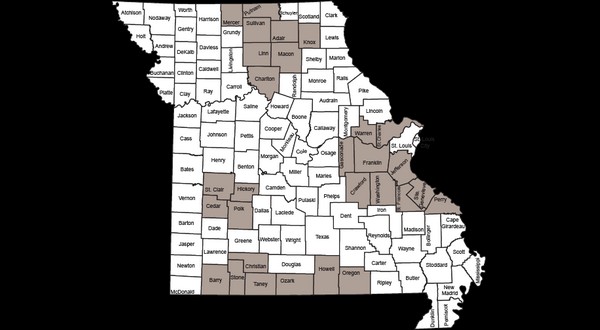
This weekend, hunters in 11 Missouri counties, including Ozark, are required to present their harvested deer to be checked for Chronic Wasting Disease (CWD) at a sampling station.
CWD is a contagious, fatal, neurological illness of deer and elk that if allowed to spread, could seriously reduce the deer population in Missouri where hunting is a billion-dollar industry attracting participants from all over the region.
In addition to Ozark, the counties include include St. Clair, Cedar, Hickory, Polk, Barry, Stone, Christian, Taney, Howell and Oregon counties.
Sample station locations and even GPS coordinates can be found in the Missouri Department of Conservation’s (MDOC) hunting guide. Click here.
Francis Skalicky, a spokesperson for the Missouri Department of Conservation, says, “We can’t find this disease without the cooperation of the hunters. Those counties are specified because it’s been found there or very close to those counties. We are still ahead of the CWD game here in Missouri. Hunters cooperation has been a huge, huge factor in us being able to stay ahead in the game and we want to stay that way.”
The Mo. Dept. of Conservation estimates there are over a million deer in the state, and they’ve sampled about 100,000 since 2002. Just a little more than a hundred have tested positive.
Skalicky points out, “That’s still a pretty small percentage. So while it is here, it is here in a very low proportion and the sample collection we’re doing the opening weekend of deer season helps us keep a handle on the disease and stay ahead.”
While Chronic Wasting Disease can wipe out large deer populations, one of the main questions concerns its danger to humans.
Skalicky says, so far the Centers for Disease Control has found no cases of humans getting infected with CWD. He says, “They do advise people to not eat meat from a deer that’s tested positive for CWD and that’s in line with what we’ve always said. We’ve advised people to never eat meat from a sick game animal.”
Another important note is that the sample stations test the deer by removing the lymph nodes in the neck. If you plan on having your deer head mounted, tell the officials at the sample station.
Skalicky says, “If they say they want it taxidermied, we will not draw a sample from that deer. The reason being the cut we make on the neck will ruin that as a taxidermy mount. But with the number of deer coming in we still feel we have a very good chance of finding the disease even without those deer. But you still have to present the deer at the sampling station.”
Here are some tips from the MDOC about what’s needed at the sampling stations:
–Field dress and Telecheck deer before arrival.
–Bring the carcass or just the head with at least 6 inches of the neck attached. (It is OK to remove the cape before arriving at the sampling station.)
–The person who harvested the deer must be present.
— Be prepared to provide your Conservation Number and point out the location of harvest on a map.
–If using a paper permit, have it detached from the deer for easy access. If using the MO Hunting app, have your permit and Telecheck information readily available.
–Position the deer in your vehicle with the head and neck accessible.
While the MDOC hopes they’ve held the disease in check, the number of counties in southwest Missouri that are now part of the CWD Management Zone has increased in recent years and there’s plenty of reason for concern.
“There is a very large number of CWD positives in Arkansas,” Skalicky points. “And that’s the cloud on the horizon because some of those cases are close enough to southern Missouri that there could be transference.”
WebReadyTM Powered by WireReady® NSI










